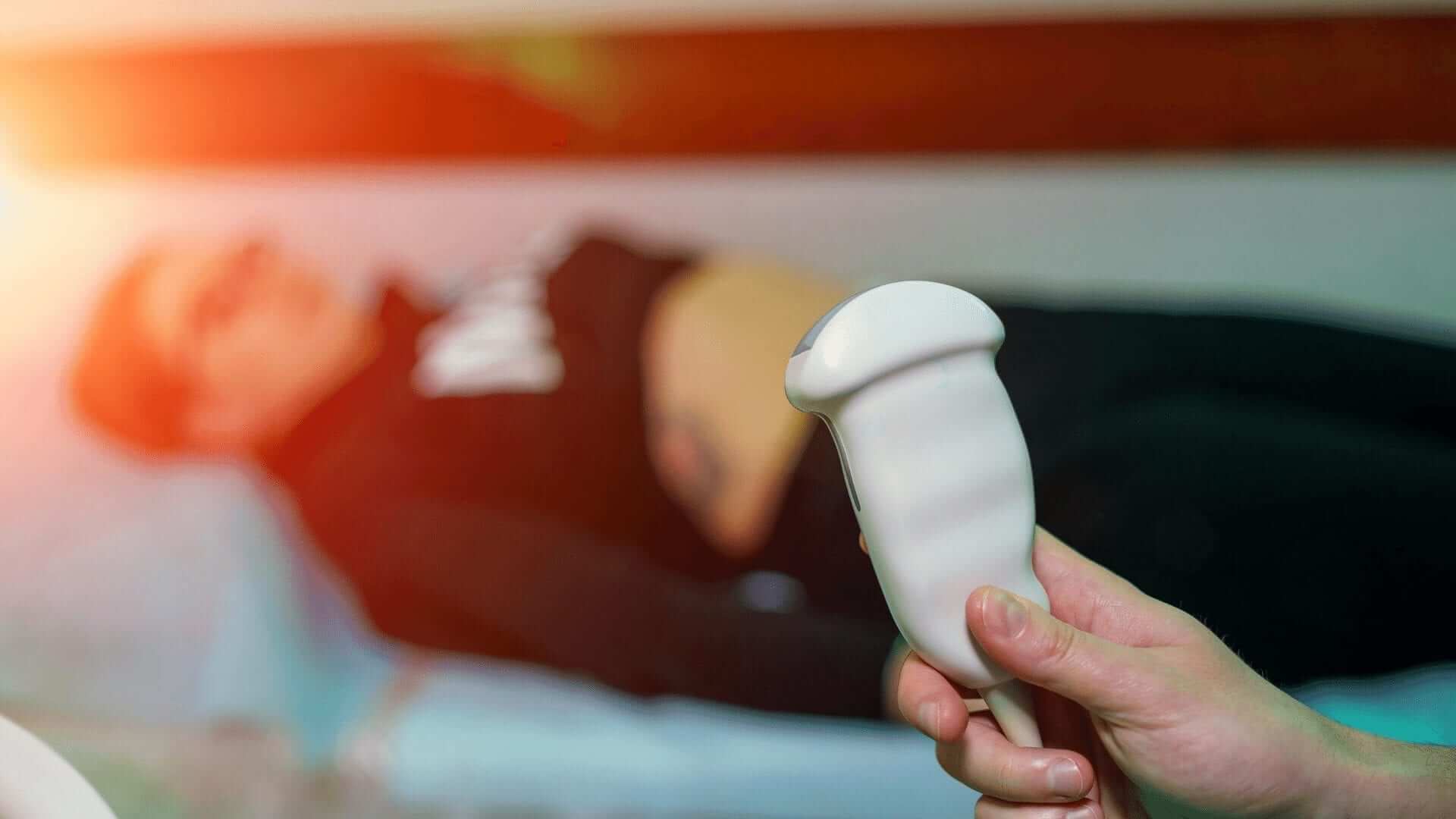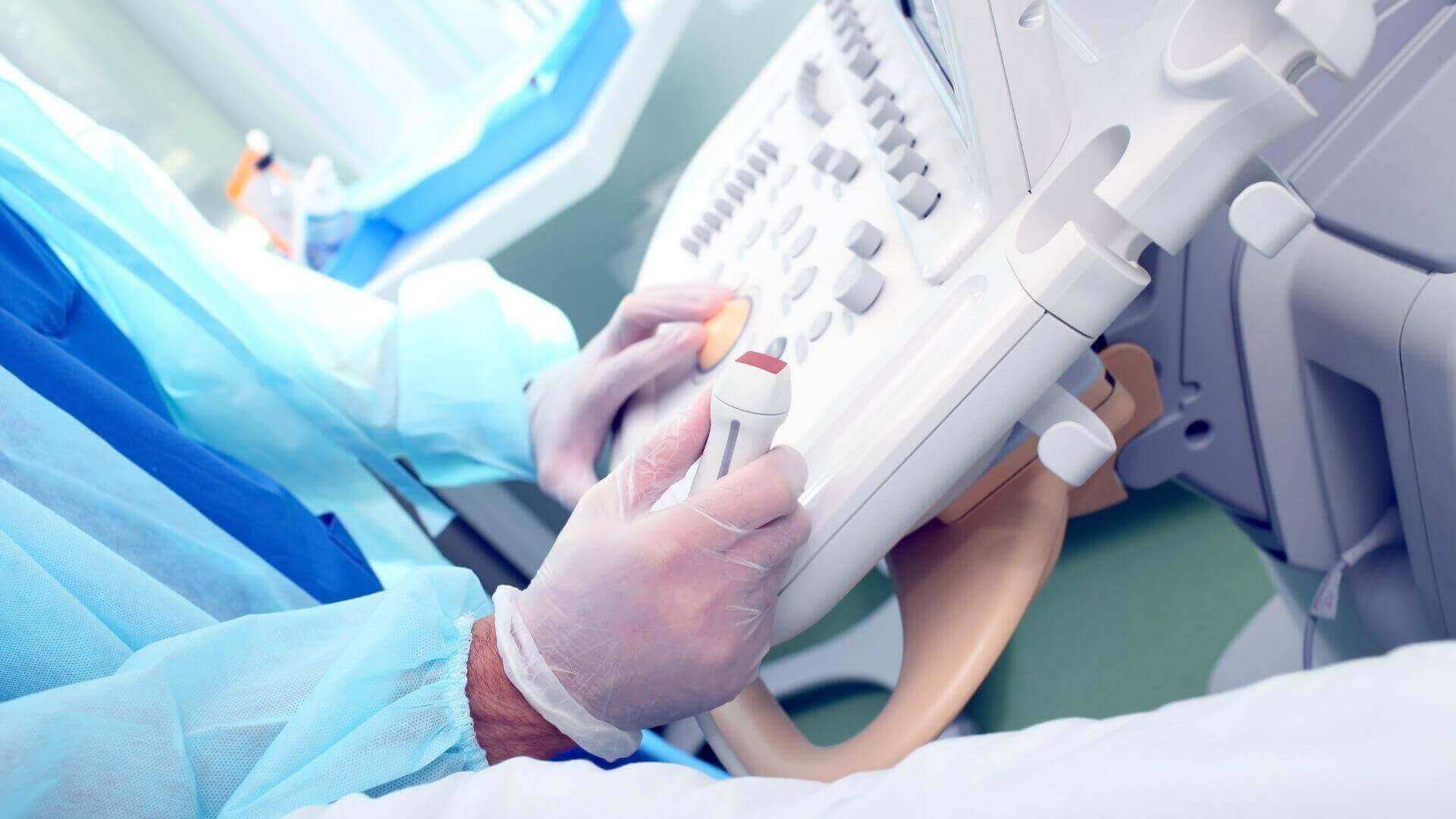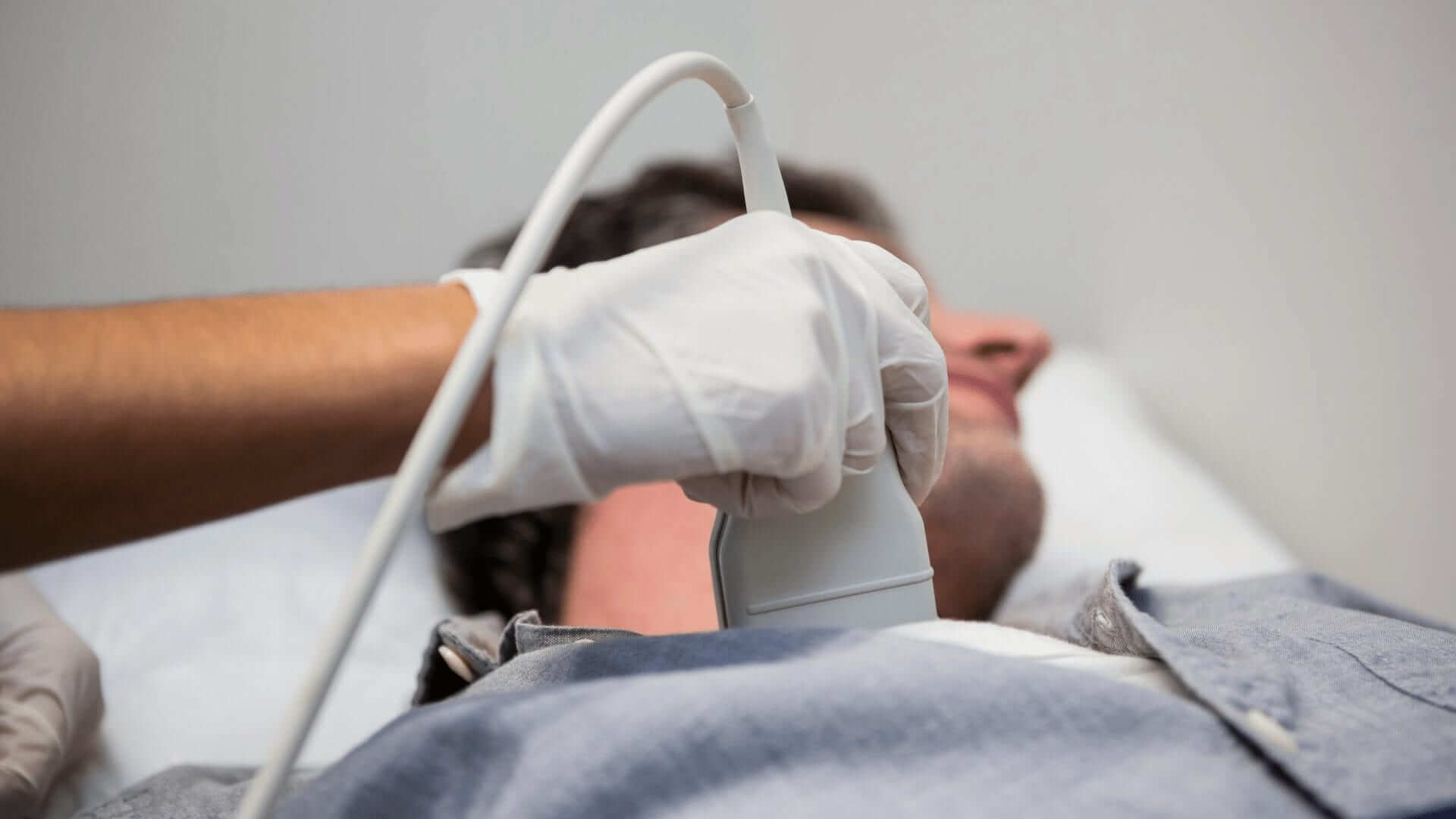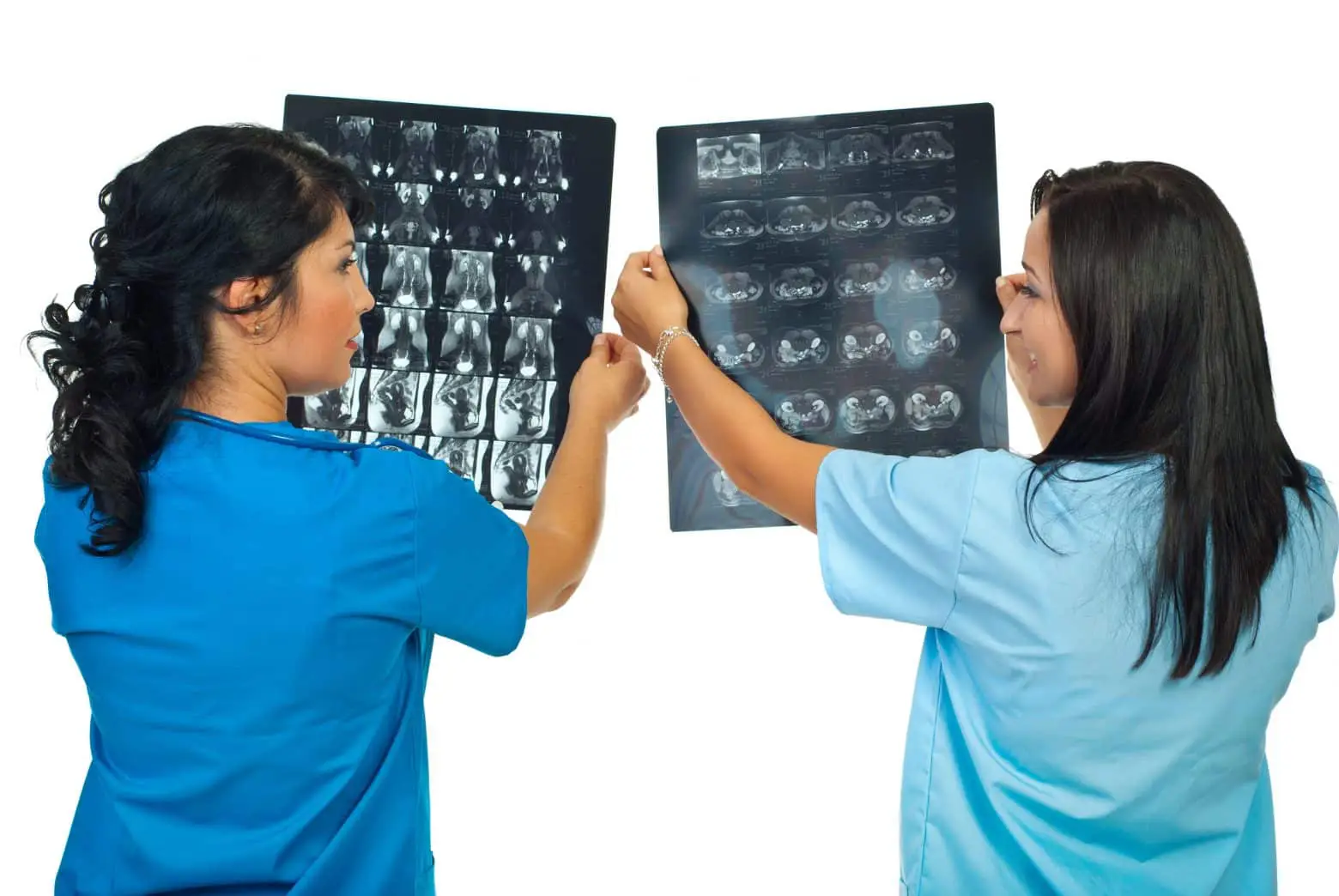What to Look for in Future Sonography Training Programs
Date: October 17, 2023
“The history of sonography dates from the classic 1958 Lancet paper written by Ian Donald and his team from Glasgow.”1 The paper (Donald et al., 1958) by Ian Donald, John McVicar, and Tom Brown was titled “The Investigation of Abdominal Masses by Pulsed Ultrasound.”1 Moreover, it outlined an early ultrasound device and its workings. In brief, some have called it the most essential paper on obstetrical and gynecological sonography ever written.2
The Healthcare World Was Listening
Later, with the help of an engineer, Tom Brown, and a local engineering company, Ian Donald developed the world’s first contact compound 2D ultrasound scanning machine. It was called the Diasonograph.1 Admittedly, the machine was crude, as were its images. However, the healthcare world was listening–not just to the soundwaves that brought it to fruition, but to the value the device delivered to medicine. Subsequent years bore machine successors with various names yet improved and enhanced images. Finally, an evolution occurred, making ultrasounds accessible and valuable to patients everywhere.
An Integral Part of Healthcare
Nowadays, sonography is a non-invasive diagnostic imaging technique and an integral part of modern healthcare. Ultrasounds are performed every day to produce images of internal body structures. As the demand for soundwave-based imaging procedures grows, so does the need for skilled sonographers continues to rise. So much so, the U.S. Bureau of Labor Statistics projects that the employment of diagnostic medical sonographers and technologists will increase ten (10) percent from 2022–2032, much faster than the average for all occupations.”3
Our A.O.S. in Ultrasound Technology
Consequently, due to growth and popularity, many would-be professionals enter schools to be trained for the profession. Sonography programs continue being launched, equipping aspiring professionals with the necessary knowledge and skills to excel in their imaging careers. While training is intense and detailed, programs like Gurnick Academy’s A.O.S. in Ultrasound Technology degree program use traditional instruction and practical training, including hands-on experiences in real-life clinics and hospitals.
Besides making one work-ready, diagnostic medical sonography certification and training signals an individual’s skill level, competency, and acumen within the field. Because training is imperative to safety, success, and service, we’ve outlined some imperatives to look for in a good sonography program.
4 Tips to Find a Quality Sonography Training Program
1. Prioritize Technological Advancements
First and foremost, sonography training programs should emphasize and stay abreast of technological advancements. As medical imaging evolves, new technologies are present regularly. Imaging programs must incorporate more modern and cutting-edge equipment and techniques to keep up with these advancements.
Students should expect to be exposed to the latest ultrasound machines, image-processing software, and other relevant advances. By incorporating new technology into their curricula, these programs help ensure graduates are well-prepared to meet the demands of the ever-changing healthcare industry landscape.
2. Emphasize Interprofessional Collaboration
In addition to technological advancements, sonography programs should emphasize interprofessional collaboration. Effective communication with healthcare professionals is essential because sonographers often work as part of larger healthcare teams. Therefore, educational programs should include interdisciplinary coursework to maximize student success and their ability to contribute while exposing them to the different roles and responsibilities within the healthcare system. Collaborative activities, such as simulations or case studies involving multiple healthcare professionals, can also help to foster and cultivate teamwork and the adaptive skills necessary for effective patient care.
3. Critical Thinking and Problem-solving Skills
Sonographers often face complex cases that require analytical thinking to obtain accurate diagnoses. Therefore, training programs should include coursework that challenges students to analyze clinical scenarios and make sound judgments based on available, albeit sometimes limited, information. Moreover, opportunities for hands-on practice and clinical rotations should be incorporated into the curriculum. Doing so provides students with real-life experiences and enhances their problem-solving and critical thinking skills within clinical settings.
4. Continued Professional Development
Lastly, sonography training programs should emphasize the importance of continued professional development. Because the medical imaging field is constantly evolving, training programs should encourage students to engage in lifelong learning beyond program graduation. An educational culture is expanded when promoting involvement in professional organizations, attending industry conferences, and pursuing advanced certifications. By fostering a culture of continuous learning, training programs extend their value to produce competent and adaptable sonographers who keep up with advancements in the field.
Conclusion
In summary, while following best practices, educators should prioritize technological advancements, encourage interprofessional collaboration, teach critical thinking skills, and continually advocate for continued professional development. By adapting to the ever-changing medical imaging landscape, quality programs will equip aspiring professionals with the necessary skills and knowledge to meet field demands.
With a focus on comprehensive education and a commitment to staying current with advancements, the future of sonography training programs looks all the more promising. Moreover, this helps ensure a well-prepared workforce capable of delivering high-quality patient care and proactive healthcare services.
Is this Career For You?
Is sonography a career path for you? If so, check out our A.O.S. in Ultrasound Technology program today.~
Citations
1^a, b, c Campbell S. (2013). A Short History of Sonography in Obstetrics and Gynecology. Facts, Views & Vision in ObGyn, 5(3), 213–229. (Accessed October 3, 2023.)
2 Woo, Dr. Joseph. “A Short History of the Development of Ultrasound in Obstetrics and Gynecology, Part I.” Www.ob-Ultrasound.net, Obstetric Ultrasound History Web, 2020. (Accessed October 3, 2023.)
3 Bureau of Labor Statistics, U.S. Department of Labor, Occupational Outlook Handbook, Diagnostic Medical Sonographers and Cardiovascular Technologists and Technicians. (Accessed October 3, 2023.)







